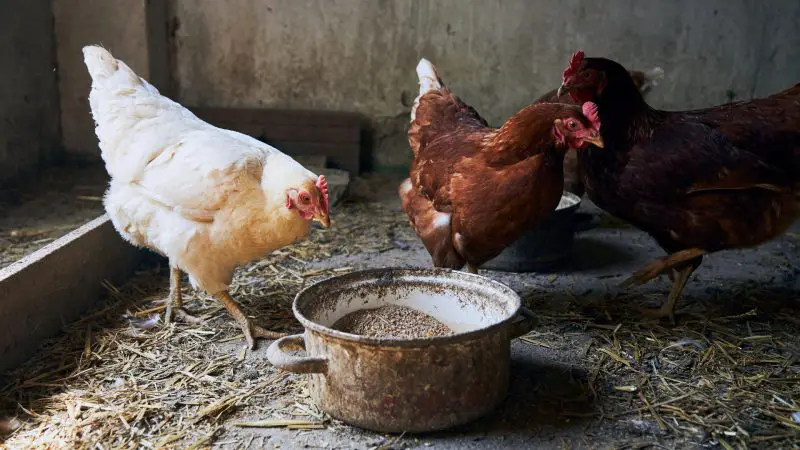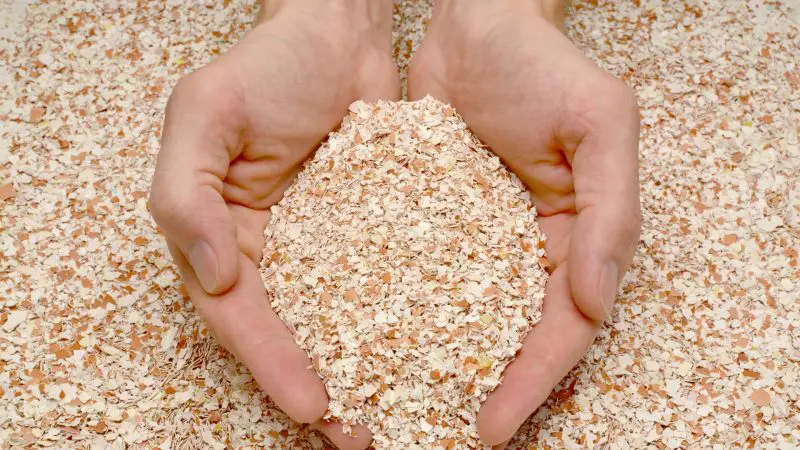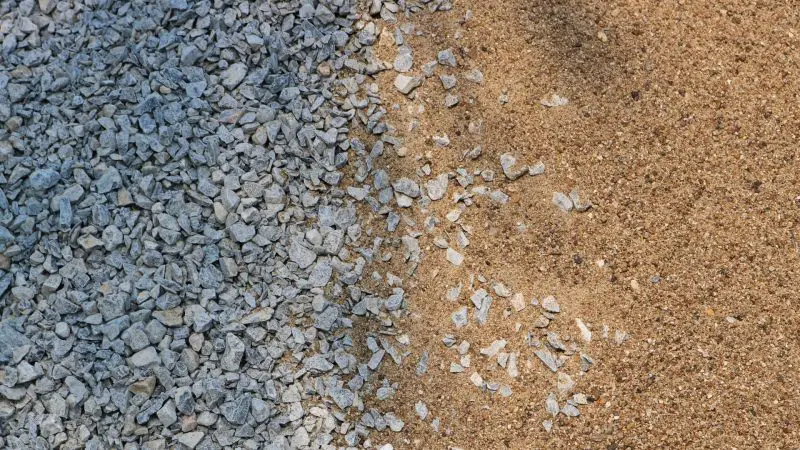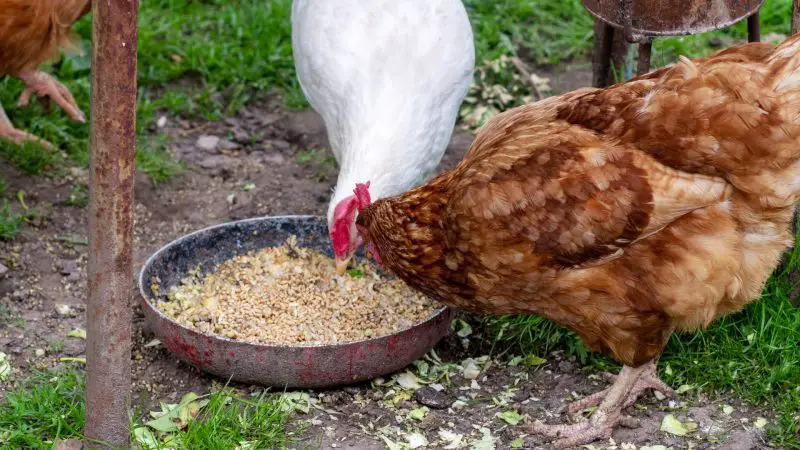Looking after your poultry means you have to take care of their every need. While chickens are relatively easy-going birds, they have a few specific needs that you’ll have to provide for. A big part of keeping your chickens happy and healthy is their diet.
What is chicken grit? Chicken grit is an essential part of the poultry diet consisting of ground-up limestone, oyster, or granite. They consume grit and store it in their gizzards. This is to help them digest their meals because they do not have teeth to mash up their food. Grit also helps strengthen eggshells.
In this article, we’ll explain why chicken grit is necessary, when and how much of it your chickens need, and where you can find it.
Why Chickens Need Grit?

Chickens, like most poultry, do not have any teeth. This means that no matter how well they cut through their foraged food, they still need help mashing it up for digestion.
In the wild, and with free-range chickens who are allowed to forage on their own, the chickens end up consuming small stones, bits of sand, and gravel. Domesticated chicken breeds need additional supplementation of hard, insoluble grit so that they have enough to store in their gizzards.
The accumulated grit is kept in the gizzard and used to mash up any food that the chicken eats. It is essential that the grit particles given to chickens to help digestion be small enough to be consumed with food yet large enough to be effective. The grit particles must be insoluble, or they will not be stored in the gizzard and simply pass through.
Grit-fed chickens grow larger than non-grit-fed chickens because they are better able to process the food they consume for all of the nutrients they need. Some kinds of commercial grit serve as mineral sources for your birds to help them grow healthy and strong.
If your chickens are raised on feed exclusively, they may not need grit. Chicken feed is soft and easy for poultry to digest. However, some form of soluble feed is still a good idea to supplement their diet.
Related: Chicken Feed: All You Need to Know!
Types of Grit
There are two types of grit that you can feed your chicken, broadly classified into soluble and insoluble grit.
Soluble Grit

Soluble grit refers to ground-up particles of oyster or even chicken eggshells. These are not useful to the chickens for digestion. Instead, they contribute vital minerals and calcium to your chickens, supplementing their diet. This addition of minerals is especially important when they begin to lay eggs.
Insoluble Grit

Insoluble grit refers to ground-up particles of granite, stone, pebbles, or sand. These particles are required by all chickens, especially if their diet has more variety than commercial feed.
These particles are available in varying degrees of coarseness and are stored in the chickens’ gizzards to help with digestion. Over time, it helps the bird to digest harder grains, which is why insoluble grit needs to be a regular part of your flocks’ diet.
When Do Chickens Need Grit?
Chickens need grit depending on the different circumstances. To determine when grit is needed, consider the following situations:
- Chickens need grit almost immediately after hatching, which is within a few days if your flock forages.
- They are reasonably intelligent birds, so if they find something missing in their diet, you’ll find the chickens seeking it out on their own. If you’re allowing your chickens to forage, they’ll naturally pick up bits of insoluble grit from the ground to help them break their food down.
- If your chickens eat a mix of feed and forage, you might want to supplement their diet with grit as well. This way, you can ensure that they get all of the nutrients they need to grow.
- Egg-laying hens will need extra calcium, especially if they are the kind that lays up to 300 eggs in a year. Eggshells need a lot of calcium to produce. So once your hens start laying, you could up their intake of soluble grit.
- Be careful when you offer soluble grit to your flock. Roosters, chicks, and non-laying hens typically do not need the extra calcium. Too much can lead to kidney disease. Offer the soluble grit in a separate bowl and let your chickens decide how much they need. Make sure the rest of your flock cannot access the soluble grit.
- Keep in mind that baby chickens need finer grit particles than adult chickens. They will be able to pick out what they need; just make sure that you’re offering a variety of grit particle sizes to your flock.
- There is some danger of the babies overeating grit. If they are on starter feed, they will most likely not require grit, and too much might be harmful. For the most part, chickens tend to be very good at self-regulating, even as chicks. Just keep an eye on your flock and use your best judgment based on what you’re feeding them.
Does Chick Starter Have Grit in It?

Chick starter or starter feed is finely milled commercial feed designed for baby chickens. It does not have any grit in it. In fact, it is designed so that baby chickens can easily digest it without needing grit. You do not need to offer grit to your flock if they are feeding on chick starters.
Related: What Do Baby Chicks Eat? | Information and Facts
How Much Grit Does a Chicken Need?
Chickens tend to decide how much grit they need on their own. It varies on what they eat, whether they lay eggs, and how old they are. However, you should also consider how much grit you should have. As a general rule, grit tends to last a long while. If you have a medium-sized flock, a 5lb (2.27 kg) bag of grit should last a few of weeks.
To decide how much grit a chicken needs, you’ll have to consider what the chicken eats.
- Chickens fed commercial feed don’t need grit, and neither do baby chickens on starter feed.
- If your chickens are eating a mix of commercial feed and foraged food, as well as the occasional treat, they need the grit to help digest that. Foragers get plenty of grit from the ground, but if their area is limited, they might need extra grit.
Crushed oyster shells for egg production and grit for digestion should also be included in a healthy laying chickens’ diet. Each week, a 6-pound hen will consume around 3 pounds of feed. Chickens that are old enough to begin laying might need the calcium boost of soluble grit in their diet as well.
Where Do You Put Chicken Grit?

Now that you know why chicken grit is important, you might want to consider how you’d like to offer it to your flock of chickens.
Chicken grit can be mixed into the feed or fed to the entire flock in a separate bowl or hopper. Baby chickens can be given greens that have sand particles on them. Soluble grit for calcium should only be offered to the chicken in a separate bowl so the rest of the flock can’t get into it.
Your chickens will pick up as much or as little of the grit as they need. If they ignore the grit the first time you offer it to them, you can try mixing it with their food. Never mix soluble oyster grit with the feed since it is a calcium supplement.
Related: How to Build a Chicken Feeder? | All You Need to Know!
